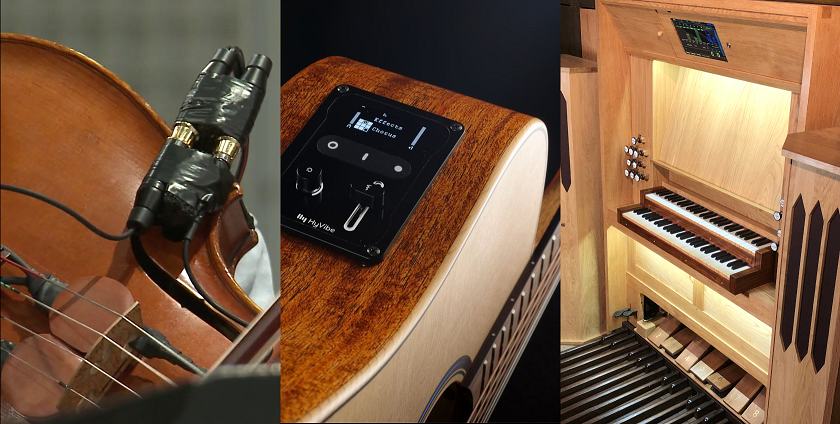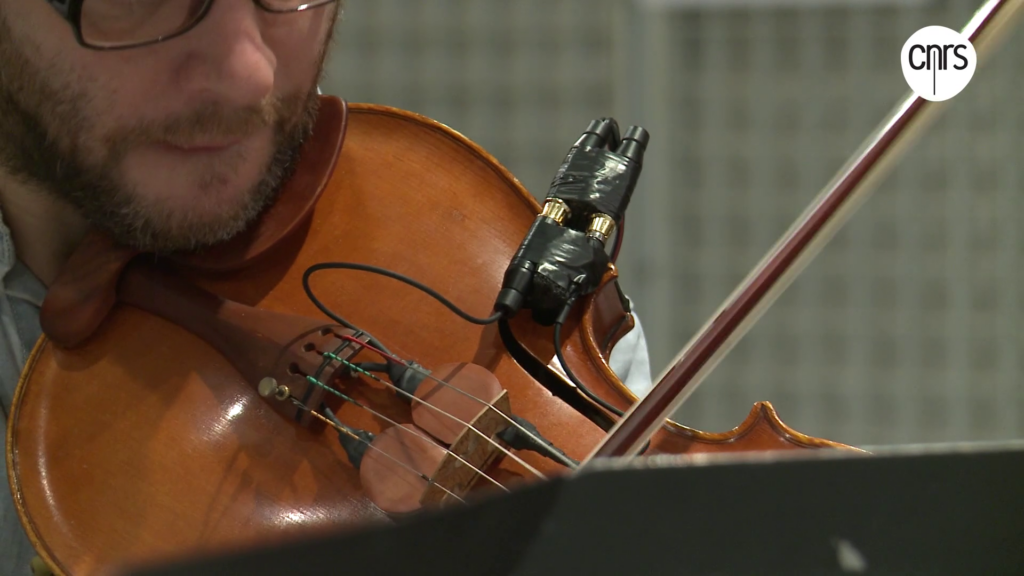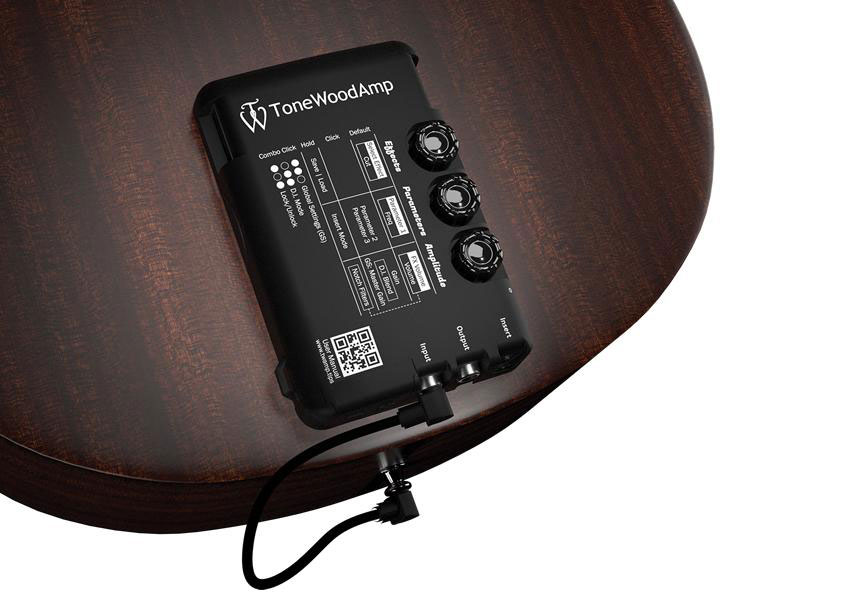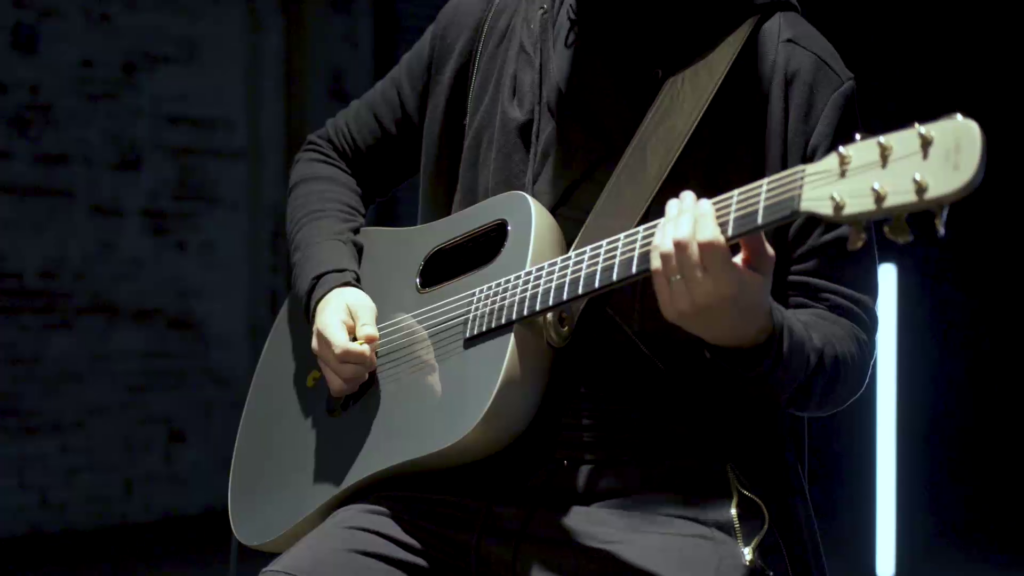
Until now we have seen an acoustic instrument being played, and at the same time the transformed sound was broadcast via a loudspeaker. Except of course for the magnetic resonator piano, the disklavier or the E-Mute made with the speaker for the trombone.
This gives us two independent sound sources: the instrument and one or more speakers. This is the classic case when playing with an instrument and electronics.
Another solution exists for broadcasting the transformed sound. This involves using the instrument itself as a loudspeaker. This is precisely the augmented instrument-making project at IRCAM, where the vibrating actuators are placed directly on the body of the instrument — for example, the violin.

The violin then amplifies the signal coming from the computer, just as it does for its own strings. The sound produced by the violin will therefore be mixed inside the instrument with the sound processed by the computer.
And as luck would have it, one of the first industrial applications of this technology was for the guitar.
The acoustic guitar offered by the company HyVibe, founded in 2017, has an onboard computer and small actuators to vibrate the guitar’s soundboard. The guitar’s sound processing can thus be transmitted by the instrument itself without requiring any external amplifier or speaker.
Other companies offer this technology, such as ToneWoodAmp, which offers a clever system that can be placed on any acoustic guitar.
Finally, the Lava guitar, which is made entirely of carbon fiber, uses the same technology to reinject the transformed sound into the body of the instrument.


The advantage of such instrument-augmentation fusion is that it does not require bulky equipment or special installation to benefit from the new sound possibilities.
In this line we find the Modalio – sound augmentation extension for pipe organ. Pre-installed and pre-tuned for the instrument and the acoustics of the space, it becomes an integral part of the instrument itself. Of course, the sound sources remain separate: the pipes for the acoustic sound and loudspeakers for the electronically transformed sound. However, in the specific case of the organ, the very space in which the instrument is located is part of the instrument and acts as its sound box. Thus, the two sources are naturally mixed.
Here’s a look at some so-called augmented instruments that will revolutionize musical instrument making — or not, it remains to be seen. We’ve now completed this series of articles, but others on the same topic will follow.